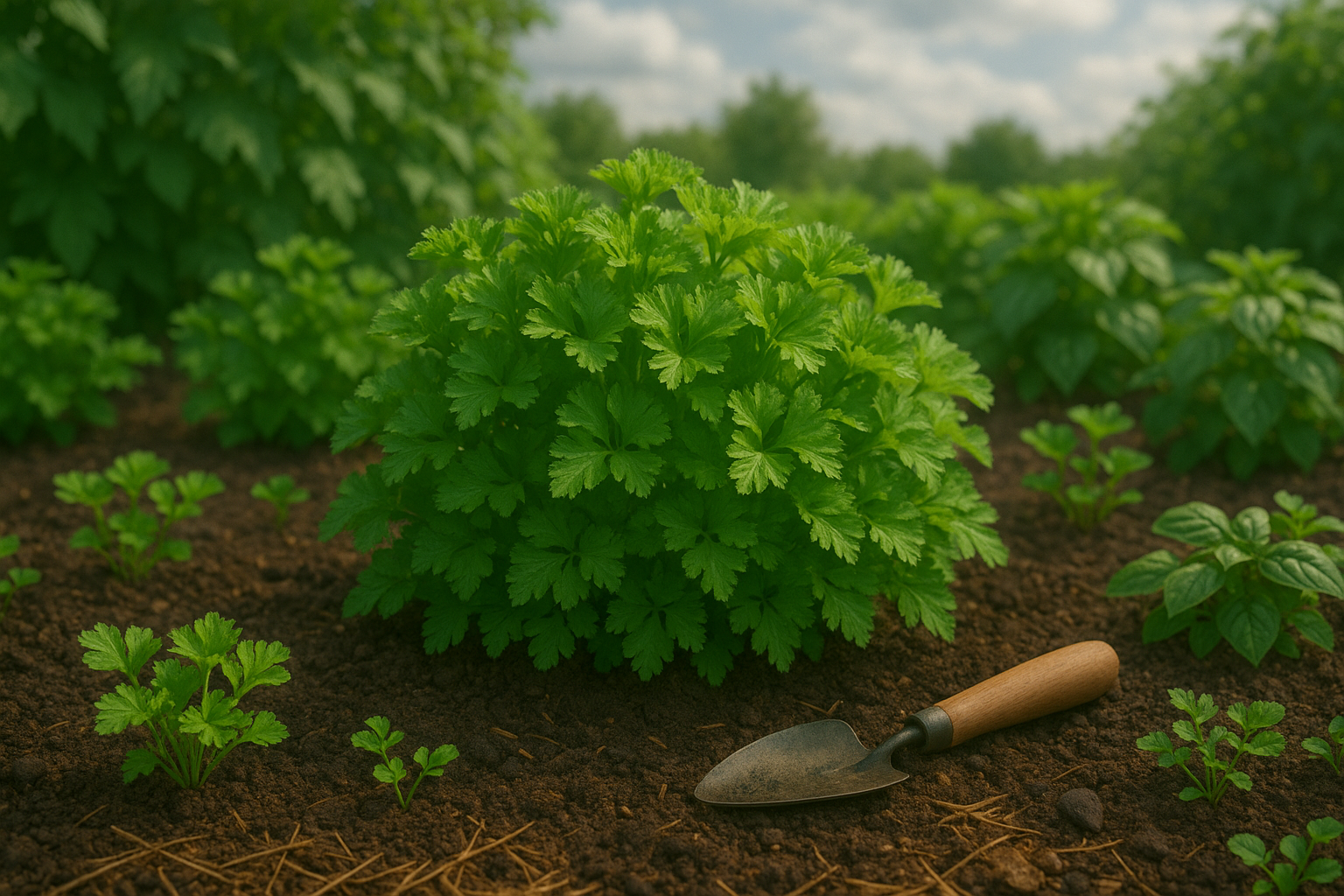Introduction to Growing Parsley
Whether you’re snipping fresh herbs for a flavorful salad or brewing a soothing tea, understanding the parsley growth stages is essential for anyone looking to cultivate this versatile herb at home. Parsley has long earned its place in kitchens around the world thanks to its bright flavor that pairs well with countless dishes and its reputation in traditional remedies for digestion and detoxification.
For home gardeners, parsley’s lush green leaves aren’t just a pretty garnish—they’re a staple for year-round cooking and a rewarding crop suitable even for beginners. Yet, despite its popularity, many find parsley a bit tricky to grow, as it has a slow start and distinct phases that can catch even seasoned gardeners off guard.
Knowing the timeline for each parsley growth stage—from germination to harvesting—not only sets realistic expectations but also ensures you provide exactly what your plants need at each phase. In this guide, you’ll learn about the key parsley growth stages, how long each stage takes, and actionable tips for growing vibrant, healthy parsley.
Whether you’re starting from seed on a sunny windowsill or planting directly in your garden beds, this timeline will help you get the most from your parsley patch.
Parsley Growth Timeline
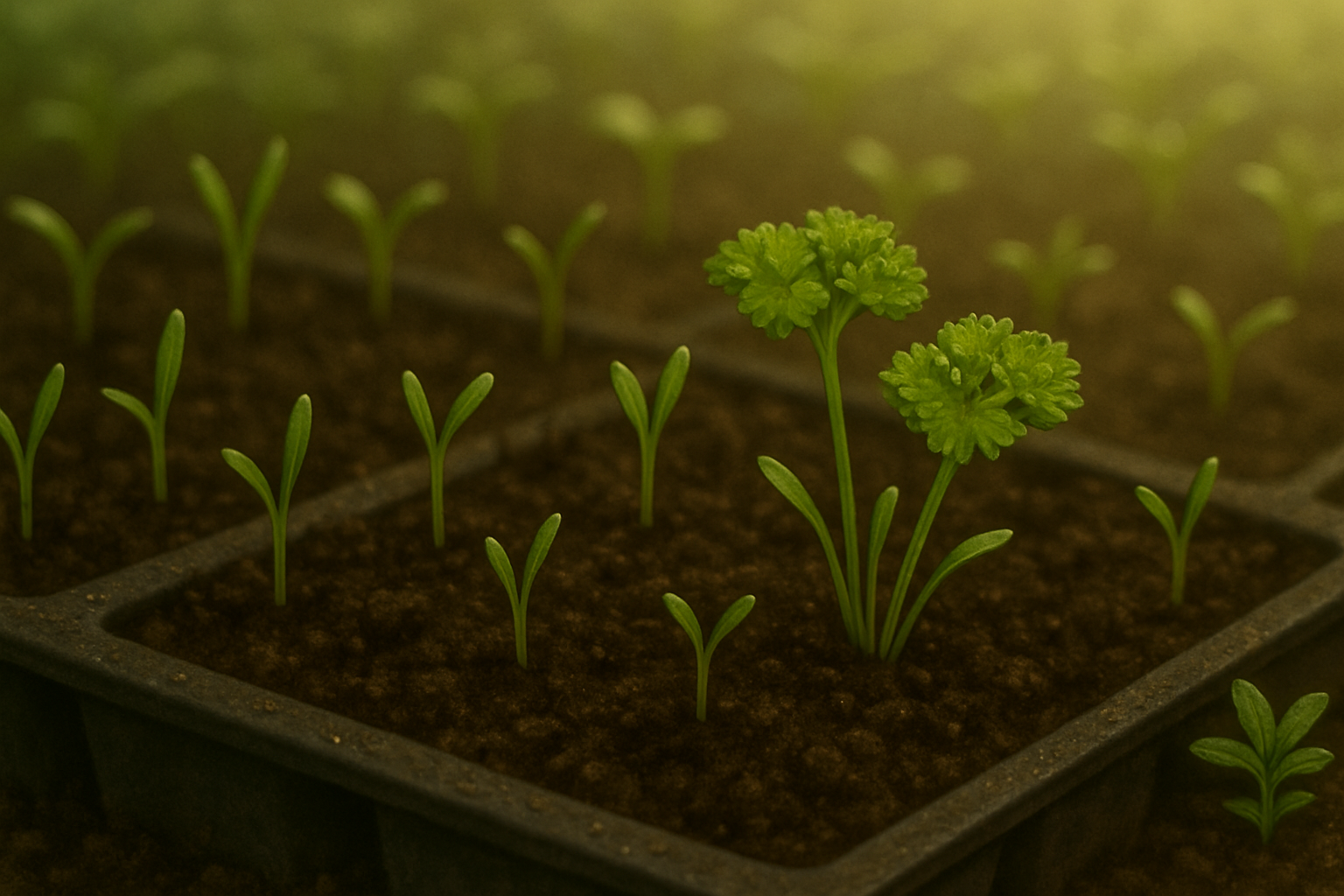
Growing parsley requires a bit of patience, but the reward is definitely worth it. Parsley seeds can take anywhere from 14 to 28 days to germinate—a slower start than herbs like basil or cilantro—so don’t be alarmed if nothing appears right away.
After sowing seeds, keep the soil consistently moist and warm; placing a heat mat under indoor seed trays can help speed things up. Once seedlings finally emerge, they’ll initially show only slender “seed leaves,” but after a week or two, you’ll start to see the familiar frilly parsley leaves, called “true leaves.”
During the next few weeks, seedlings will develop steadily, though you’ll notice parsley grows slower than many other common herbs. Outdoors, parsley takes closer to 70–90 days from seeding to reach full maturity, especially if cooler spring temperatures slow early growth. An indoor setup with regulated warmth and lighting can sometimes shave a week or two off this timeline.
Indoor plants also benefit from fewer pests and steadier conditions, leading to more even progress, but they’ll still need regular thinning and good air circulation. Around the 2- to 3-month mark, the parsley plants fill out with deep green, aromatic foliage—that’s your sign it’s entering the ideal harvest window.
For repeated harvests, pick the outer leaves first and allow the rest of the plant to regrow, snipping close to the base to encourage bushier new shoots. Whether you’re growing parsley on a sunny kitchen windowsill or in the garden, just remember that patience during the slow germination phase pays off with a lush, productive herb you can clip for months.
Planting Parsley
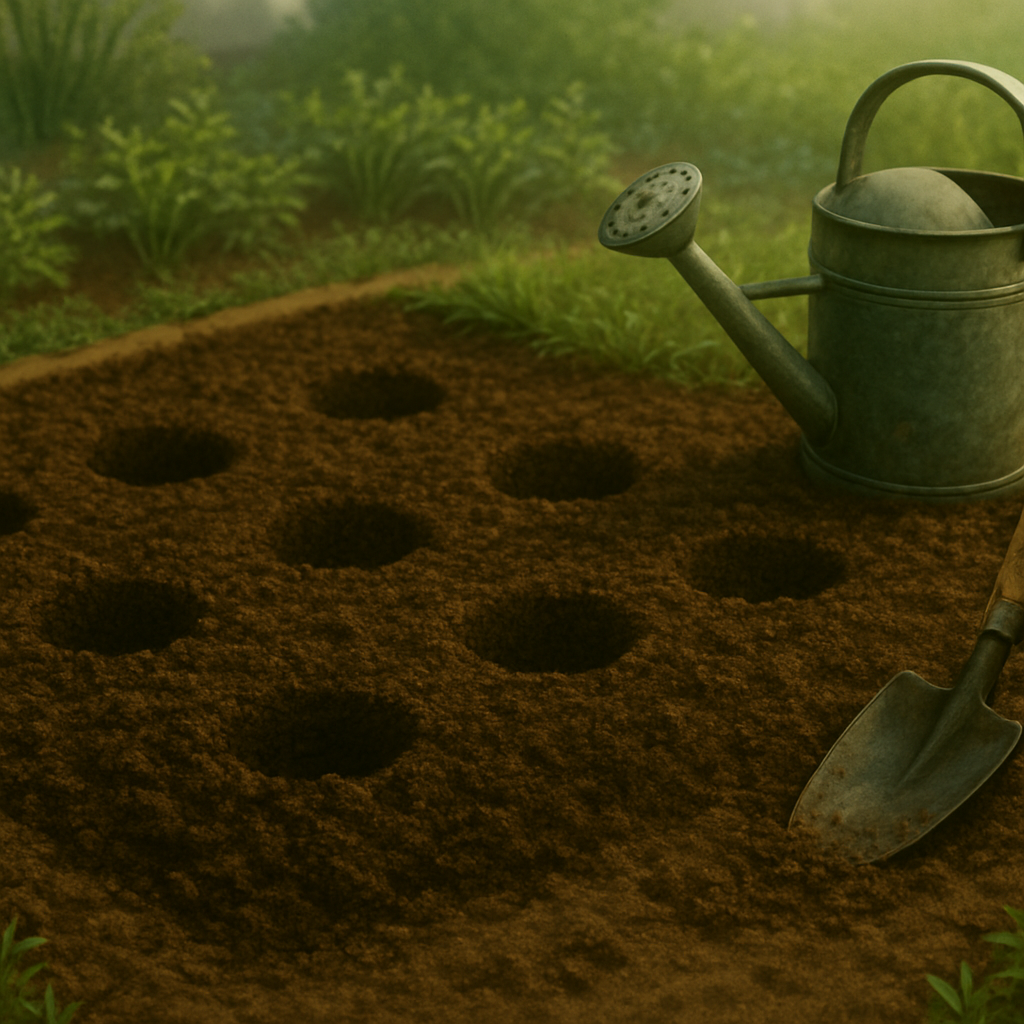
The best time to plant parsley is in early spring once the soil has warmed up—usually a few weeks before the last expected frost—or during the cooler months of fall, especially in regions with mild winters. For healthy parsley growth, choose a spot that gets 6 to 8 hours of sunlight daily, though it can also tolerate partial shade.
Prepare the soil by mixing in compost or well-rotted manure to create a rich, well-draining environment with a neutral pH (around 6.0 to 7.0). When deciding whether to sow seeds directly outdoors or start them indoors, consider your local climate: in colder areas, starting seeds indoors 6 to 8 weeks before the last frost helps jumpstart growth.
Parsley seeds are slow to germinate, so soak them in warm water for 24 hours before planting to speed up the process. When planting outdoors, space seeds or seedlings about 6 to 8 inches apart to give the leafy herbs room to spread.
If your garden space is limited, parsley does well in containers—just use pots at least 6 inches deep and ensure good drainage. Keep the soil consistently moist but not soggy, and mulch to retain moisture and discourage weeds.
Whether you’re filling a garden bed or brightening a balcony, these tips will help you grow lush, flavorful parsley throughout the season.
Stages of Growing Parsley (Step-by-Step Guide)
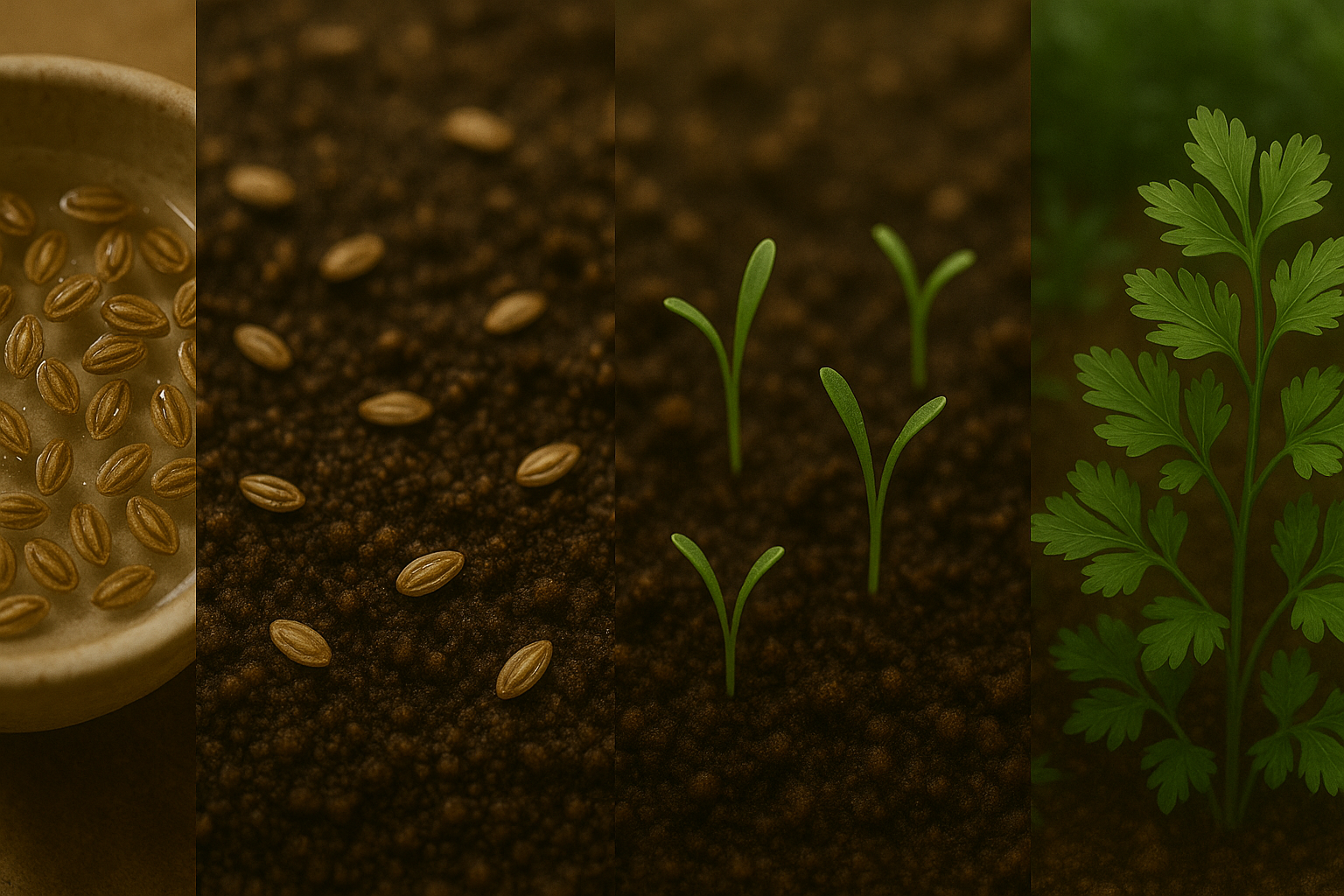
Growing parsley successfully begins with sowing seeds, ideally in early spring. Since parsley seeds are slow to germinate, soak them in warm water overnight to speed up the process. Use moist, well-draining soil for the best results. Sow seeds about a quarter inch deep and keep the soil consistently damp—not soggy—until seedlings emerge, typically in two to four weeks.
Place seed trays or beds in a sunny spot or under grow lights, as parsley thrives with at least six hours of sunlight daily.
Seedling Care
Once sprouts appear, maintain an evenly moist environment, but avoid overwatering to prevent root rot. Ensure good air circulation to prevent damping-off, a common fungal issue. When seedlings develop two or three leaves, it’s time to thin or transplant them. Space plants 6 to 8 inches apart to give each one room to grow strong, bushy, and healthy.
Crowded seedlings can stunt growth and increase disease risk.
Ongoing Maintenance
- Water deeply whenever the top inch of soil feels dry.
- Feed lightly with a balanced fertilizer every 4–6 weeks.
- Keep the area free of weeds.
- Check regularly for pests like aphids.
Parsley is fairly hardy but avoid waterlogging the roots and never let the soil dry out completely.
Harvesting
You can begin harvesting once plants are well-established, about 70–90 days after sowing. Cut stems from the outer edges first, always leaving the central growth intact to keep the plant productive. Avoid harvesting more than a third of the plant at one time to allow continued growth.
By paying attention at every stage—avoiding common mistakes like overwatering, poor lighting, or overcrowding—you’ll enjoy fresh parsley for months as either a cut-and-come-again herb or a beautiful addition to your garden.
Caring for Parsley Plants
Caring for parsley plants involves a few simple but vital routines. Water parsley consistently, aiming to keep the soil lightly moist but never soggy; a deep watering 1–2 times per week is usually enough, depending on weather conditions. Over- or under-watering can cause yellowing leaves, so always check soil dampness before watering.
Add a balanced, water-soluble fertilizer every 4–6 weeks to boost leaf growth, but avoid excess, which can lead to lush foliage with poor flavor. Mulching with organic material—like straw or shredded leaves—shields roots, conserves moisture, and suppresses weeds.
Keep an eye out for parsley worms: these bright green caterpillars munch on leaves but can be handpicked and relocated to keep damage minimal. To prevent diseases like root rot and fungal spots, water at the base of your plant and ensure good airflow. Remove any yellowing or spotted leaves promptly.
Prune by snipping outer stems at the base; this encourages bushier growth and extends the plant’s productive season. If you notice slow growth, check that your parsley has enough sunlight (at least 6 hours/day) and isn’t root-bound—sometimes repotting helps.
Yellow leaves often signal watering issues, nutrient deficiency, or insufficient light, so adjust care accordingly. By staying consistent with these tasks and observing your plants closely, you’ll keep your parsley thriving from spring well into fall.
Harvesting and Storing Parsley Properly
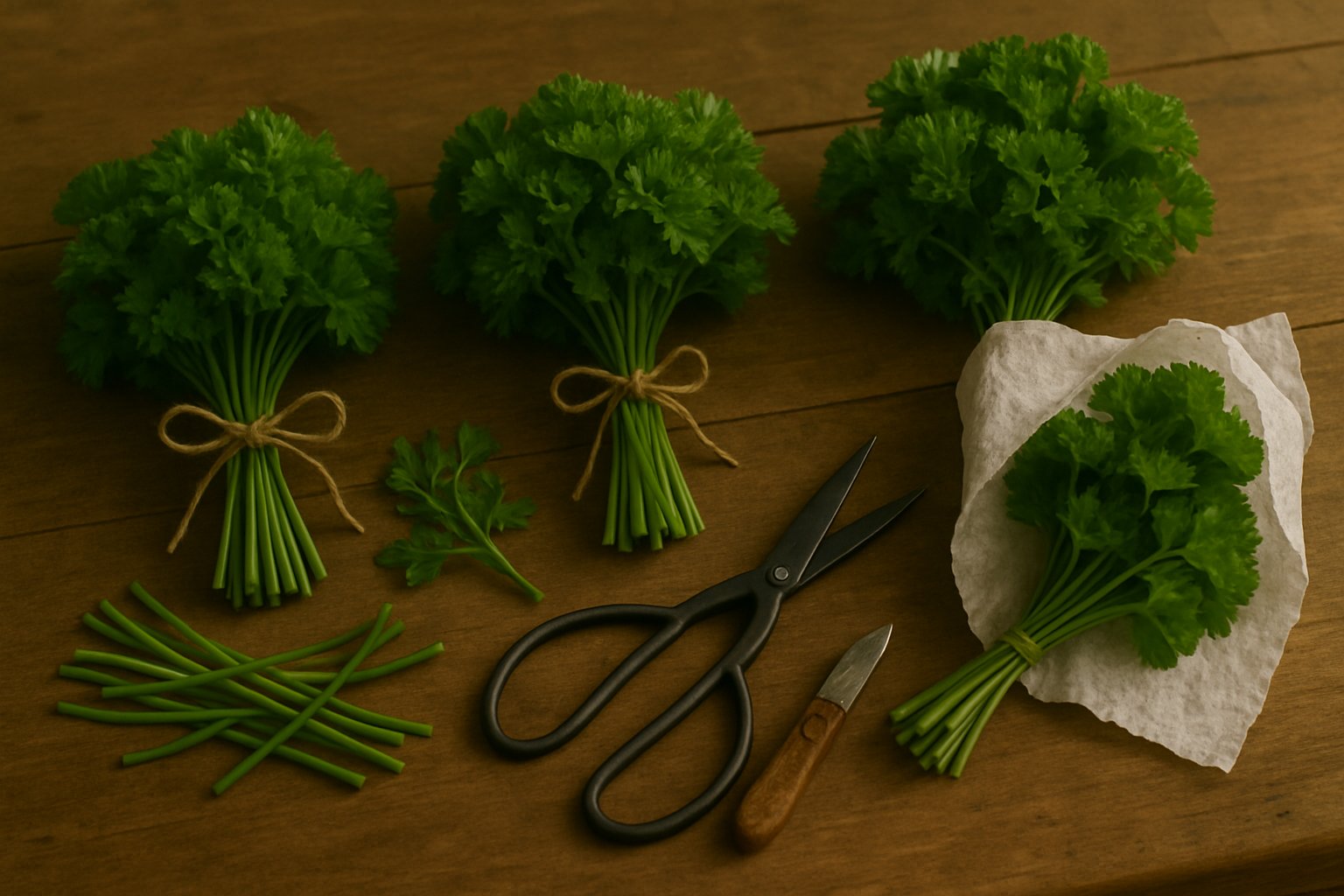
Knowing when to harvest parsley is key to enjoying its vibrant flavor. Your parsley is ready when the stalks have at least three segments and the leaves look full and rich green—usually about 70 to 90 days after planting.
For ongoing harvests, use clean scissors or garden shears to snip outer stems near the base, leaving the inner shoots to keep growing. Avoid pulling up entire plants unless you’re at the end of the season, as gentle cutting encourages new leaves and extends harvesting.
Once picked, rinse the parsley gently and pat dry. For short-term storage, wrap sprigs loosely in a damp paper towel, place them in a plastic bag, and store in the refrigerator crisper—they’ll stay fresh for up to two weeks.
If you need to keep parsley longer, consider drying or freezing:
- To dry: Tie small bunches together and hang them upside down in a dark, airy place until crumbly, then store the leaves in an airtight jar.
- For freezing: Chop parsley, place it in ice cube trays with a splash of water or olive oil, freeze, and store the cubes in a freezer bag.
These methods help you enjoy homegrown parsley’s zest anytime you need it.
Frequently Asked Questions About Growing Parsley
Wondering how long parsley will last in your garden? This hardy herb is typically biennial, meaning it lives for two years—producing leaves in the first year, then flowering and seeding in the second. However, many gardeners treat it as an annual, replanting each season for the best flavor and leaf production.
If your parsley’s leaves are turning yellow, check for a few common causes:
- Overwatering
- Poor drainage
- Lack of nutrients in the soil
A quick fix is to trim the affected leaves and allow the soil to dry out between waterings. Then, fertilize with a balanced, organic plant food. You might also notice yellowing if your parsley is becoming rootbound in a small pot—repotting can help.
Want to regrow parsley from cuttings? While regrowing from root divisions works best, you can try rooting a fresh stem cutting in water and transplanting it once roots form, though success may vary.
For more in-depth tips—like propagating from seeds or preventing pests—explore resources from local extension offices or check out advanced herb gardening guides online for expert advice and troubleshooting support.
